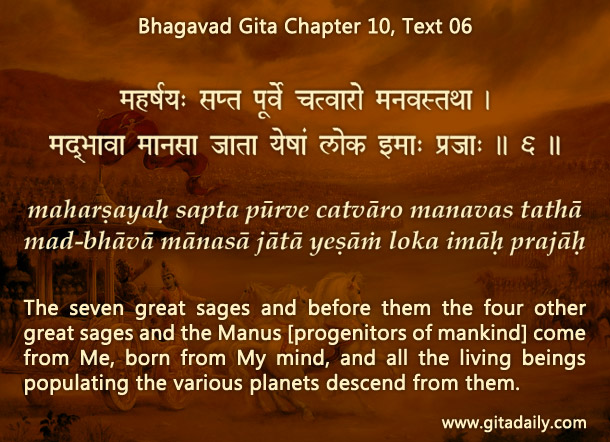One of the most endearing aspect of the conception of God revealed in the Vedic tradition is that he doesn’t let his greatness create a great distance between him and us. He makes himself accessible by manifesting in this world in various forms, specifically the forms that are attractive according to contemporary conceptions of attractiveness.
Thus, Krishna manifests in one of the most powerful dynasties of his times: the Yadu dynasty. And yet even when he appears as a scion of that dynasty, he remains eternal and transcendental.
The Bhagavatam gives the example that just as a sandal can be found anywhere, but is found especially in the place known as Malaya. Similarly, the Lord can appear in any dynasty but he chooses to appear in the dynasty of the Yadus. Just as sandal doesn’t belong to the Malaya region alone, the Lord doesn’t belong to the Yadu dynasty alone.
Thus, the Bhagavad-gita (10.06) states that Krishna is the source of all the progenitors of the universe from whom in due course the whole universe became populated. This implies that Krishna is the source of all the dynasties that existed at that time when the Gita was spoken and indeed of all dynasties existing at all times everywhere.
To the extent we dwell on the all-inclusiveness of his supreme position, to that extent we can appreciate the extraordinary accessibility of his manifestation in his two-handed form.
Just as the sun rises from the eastern direction, but was not birthed by that direction, similarly, the dynasty in which Krishna appears is the channel for manifestation, not the cause of creation.
By thus appreciating how the source of everything makes himself mercifully accessible to us, we can increase our pure affection for him.
To know more about this verse, please click on the image
Explanation of article:
Podcast:
Download by “right-click and save”


Leave A Comment